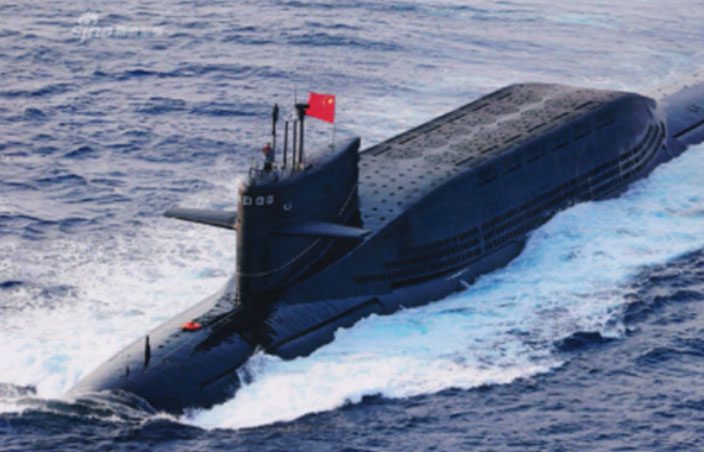Chinese researchers are testing the world’s first 6G device capable of detecting submarines, which is small enough to be mounted on a UAV (Unmanned Aerial Vehicle).
According to the South China Morning Post (SCMP), the project team from National University of Defense Technology explains that the terahertz device can identify extremely small surface vibrations caused by low-frequency sound sources in the ocean. Typically, these wave vibrations are very small, around 10 nanometers, which is far below the detection range of existing technology.

Chinese Jin-class submarine. (Photo: Sina).
Terahertz is a range of electromagnetic wave frequencies that fall between microwave and infrared radiation, which are not visible to the human eye. Terahertz technology has been proposed as a potential solution for achieving high data rates and low latency for the next generation of 6G communication technology. Some airports in China have already implemented terahertz screening devices to detect illegal items hidden under passengers’ clothing.
According to the researchers, monitoring and analyzing small vibrations from low-frequency sound sources underwater can not only help locate submarines but also gather critical intelligence. The study was published on August 11 in the Chinese Journal of Radar.
With the latest technological advancements, the terahertz submarine detection device is compact enough to be mounted on drones. The researchers noted in their report: “The small UAV platform offers advantages in mobility, low cost, and flexible deployment.”
This device can also work in conjunction with other submarine detection methods such as Magnetic Anomaly Detectors (MAD), microwave radar, or lasers, thereby providing vital information for submarine detection and identification.
Although the Radar Journal did not specify when the tests were conducted, it mentioned that they took place at an undisclosed location off the coast of Dalian in northeastern China in the Yellow Sea.
Military scientists employed artificial sound sources to simulate the noise emitted by submarines. According to the researchers, when a submarine moves at high speed, it produces significant radiated noise that travels to the water’s surface and stimulates surface vibrations. However, these vibration waves become very weak when they reach the water’s surface, making detection with conventional technology impossible. In the tests, the terahertz sensor device captured artificial waves with amplitudes ranging from 10 to 100 nanometers, depending on marine environmental conditions.




















































